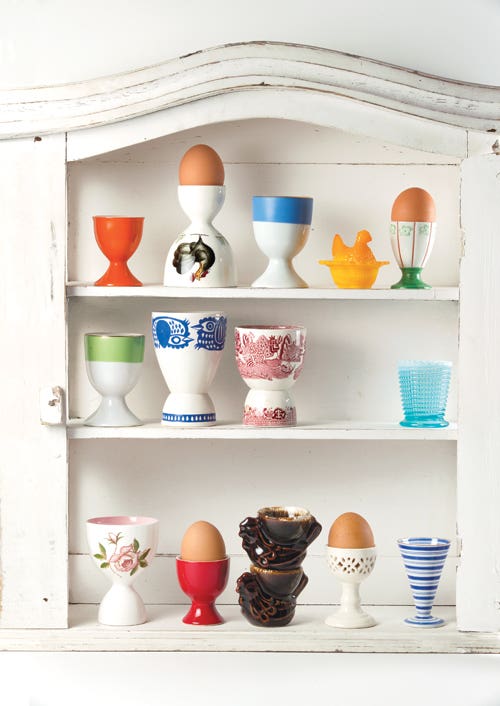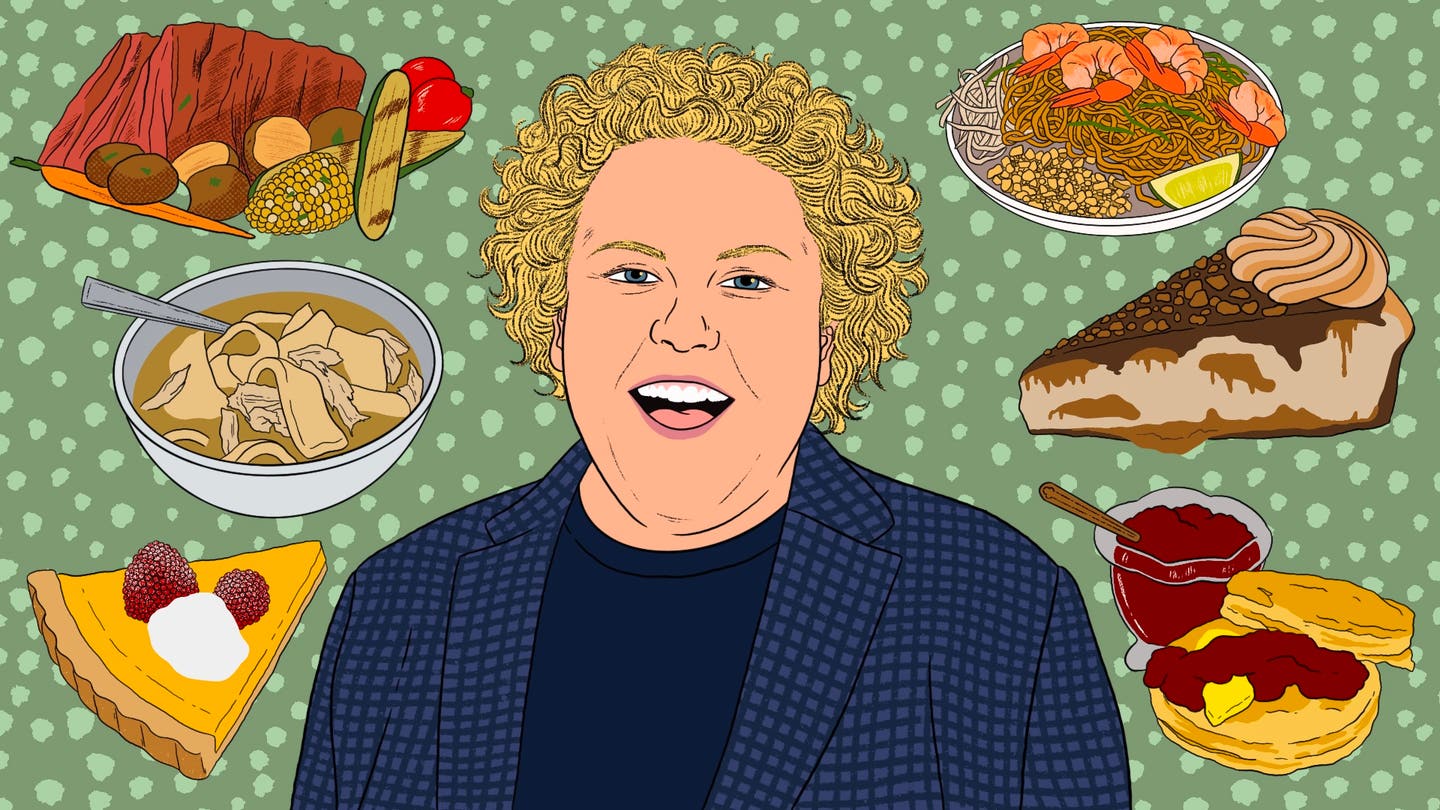
One breakfast food from my youth in Colchester, England, remains, in its simplicity, almost impossible to improve upon: the soft-boiled egg, standing at solemn attention in an eggcup. My eggs were prepared by Mrs. Szymbra, a member of the village church where my father served as minister. She and her husband, a Polish immigrant named Roman, often had us over for breakfast, where, along with eggs, they occasionally served fresh jelly donuts. Despite the sweetness of the latter, I remained most fascinated by the former. As Mrs. Szymbra lowered the eggs into her pot of swiftly boiling water, I was sent to the cupboard to select an eggcup.
The Szymbras, as it turned out, were committed practitioners of the gentle madness of eggcup collecting known as pocillovy, a term derived from the Latin words pocillum, which means small cup, and ovum, meaning egg. Because of this, their cupboards contained virtual Narnias of eggcups in porcelain, pewter, plastic, and humble clay. While eggcups date back to ancient times, most of the Szymbras' hailed from the Victorian era—when they were first mass marketed in England—or later. There were chicks and chickens, birds of every kind, rabbits, field mice, foxes, and so many dragons and damsels that the cupboard seemed like a stage of fairy tales wrought in miniature. Some bore shields and royal visages that looked like faux Faberge or pale Wedgwood. I preferred those with a zoological theme.
As I made my decision, Mrs. Szymbra toasted and buttered homemade bread, sliced it into strips, and halved them into "soldiers" for dipping. Though I anticipated the meal, it seemed a shame to mar that perfectly engineered masterpiece steaming on its pedestal. Still, what else was there to do but swiftly decapitate it with a butter knife, then gaze at the saffron-colored yolk as it glistened, ready to receive my freshly buttered regiments.
Keep Reading
Continue to Next Story










